Zeiss 50mm f/1.4 Planar T* ZE Review
Dustin Abbott
December 3rd, 2014
The Zeiss 50mm f/1.4 Planar T* is an interesting lens. The last 12 months has been somewhat of the year for 50mm prime releases. Both the Sigma 50mm f/1.4 ART and the Zeiss Otus 55mm f/1.4 released to a lot of fanfare, and deservedly so, as they are superb optical instruments. The Otus raised the bar of what was possible in a large aperture prime lens. It also raised the bar on what could be charged for 50mm prime lens, with an initial price north of $4000. Both the Sigma and the Otus embraced a very different design ethos than earlier 50mm(ish) primes from either company. 50mm primes have historically been fairly compact, stubby lenses (even the very large aperture versions), but the Otus threw that whole design philosophy out the window. It weighs 3x as much as the Planar T being reviewed today and is 2 1/2 times as long. It looks more like a medium telephoto than a “normal” prime lens. Sigma set its sights on the Zeiss Otus and crafted a lens that is similarly longer and larger than its previous 50mm f/1.4 prime, resulting in a lens that reminds me more of a 24-70 f/2.8 zoom in its look and design.
But the Planar T 50mm takes me back to some of my classic favorites from yesteryear. It is small and compact, with a 58mm front element. It is only 2.6″/66mm around and 2.7″/69mm long (without the hood attached). It’s construction is dense, all metal and glass, and it has that quality, high end build quality that I associate with Zeiss products. The weight is 12.4 oz/350g, making it fairly similar to the Canon EF 50mm f/1.4 in size if not in feel. Beyond those basic dimensions, the Planar T has little in common with the Canon 50mm f/1.8 and 1.4’s that I am so familiar with. It reminds me more of some beloved Takumars from the film era. Like those vintage lenses it is manual focus only, but unlike many of them its aperture iris is electronically controlled like any other modern lens. The lens will also communicate all typical EXIF data to the camera body (a big deal for me). While it is manual focus only, it will light up the appropriate focus point and “beep” when focus is confirmed. The Planar T is a joy to manually focus, with a metal ribbed focus ring that is perfectly damped and smooth. There is a very pleasant mechanical feel to the hard stops at macro and infinity that seem so much more “definite” than the more undefined feel of most AF lenses when manually focusing. I was reviewing the Sigma 50mm f/1.4 ART at the same time, and on the occasions when I needed to manually focus it I quickly noticed how inferior the focusing action was. A secondary challenge when manually focusing the Sigma was the fact that there is very little travel between 10 feet and infinity focus. Making fine adjustments between those two points proved difficult.
The Zeiss, by contrast, has a much longer “throw”, meaning that making precise adjustments is relatively simple. The distance from macro to infinity is roughly twice as long. The downside to that added precision, however, is that major focus adjustments don’t come quickly. One who uses these types of lenses regularly will learn to make predictive focal adjustments before even beginning the process of fine tuning focus. The Zeiss has etched markers on the barrel to show distance scale, and even has aids for setting hyperfocal distance according to aperture. Old school indeed!
Let me take a moment to gush over the appearance and “feel” of the Zeiss. This is a beautifully crafted lens. I love the glossy black finish of the barrel that contrasts beautifully with the chrome “nose” on the lens that houses the bayonet mount for the lens hood on the outside and metal filter threads within. The view from the front is equally beautiful, with the outer chrome ring accentuating a black matte finish surface with the name of the lens around the front element. The included metal lens hood clicks smartly into place with a definite click. Its interior is flocked to prevent stray light from being reflected on the front element. The lens hood is on the smallish side (only about 3/4″ long), and unlike many hoods that have a scalloped edge this hood is essentially a smooth black ring. When reversed for storage it is the most closely fitting lens hood that I have ever seen. It literally takes almost no additional room for storage. While the lens hood is small, so is the lens, so the lens hood must be in the fixed (forward) position to access the focus ring. In the reversed position the focus ring is covered. The look of the lens embraces the best of vintage photography. Not dated, vintage. It is a very classy little piece of kit!
The only discordant note in all of this engineering goodness is the lens cover. It’s not just that this is the only plastic thing in sight, it’s that it feels a bit flimsy even by the standard of other lens covers. There’s nothing “wrong” with it; it just feels slightly “off” when compared with the whole.
The lens barrel extends ever so slightly during focus, but it is such a minor movement that you won’t notice it very much. The front element does not rotate during focus, however, so the use of circular polarizers is unhindered.
While the lens has a vintage “vibe”, it is a thoroughly modern designed released in 2010. It has 7 elements in 6 groups along with a 9 bladed aperture that creates beautiful bokeh “blur”. Due to a rather tepid minimum focus distance of 1.48 feet/45cm, the Planar has a unremarkable maximum magnification of .15x or 1:7 reproduction. This is a typical performance for the class, however, so don’t read too much into it.
The Planar T has a somewhat niche role even amongst Zeiss normal alternatives. The aforementioned Otus occupies the Mount Olympus of the 50mm dog-pile, but Zeiss also released a 50mm f/2 Makro-Planar lens about the same time as the Planar T. The Makro is a little bit larger, has a slightly smaller aperture, but adds both improved sharpness along with a .50x (1:2) maximum magnification. I am currently reviewing the Makro-Planar, and it is a very nice lens. So where does that leave the Planar T?
In a pretty good place, as it turns out. There are (as of the time of this writing) 165 user reviews on B&H Photo for the 50mm f/1.4. The average rating? 5 out of 5 stars. There are a number of reasons for this.
- Size. Not everyone wants a massive lens. Some people want a compact, unobtrusive lens that they can actually bring easily along. On that note, the Planar T is actually a sweet option on my mirrorless body (EOS M) via adapter. The weight is fine, the size still compact, and while the balance is a little front heavy, it is very nice to use.
- Price. This lens isn’t cheap, but it is one of the cheapest entry points into owning a fine Zeiss lens. The current price is $725 at B&H, meaning that you could buy nearly five of these for the price of the Otus. When you hold this lens in your hands it feels like a premium product that will last you for a lifetime. There is something very appealing about that. Zeiss lenses seem like a long term investment.
- Image quality. This lens is not the benchmark for optical quality in a normal lens, but there is something special about its rendering and very smooth bokeh. It has some shortcomings which we will address in a moment, but there is more to pleasing images than absolute sharpness. Some lenses have a unique combination of color, contrast, and “drawing” that makes them special. This lens is one of them.
- Video. Videographers LOVE Zeiss lenses. Why? Because true video production is all about manual focus, and nothing manually focuses quite like a Zeiss lens.
- Color Rendition. Zeiss lenses produce what one might call “cinematic” color. It is just a bit richer than what the competitors offer, and when comparing identical shots from the Sigma and the Zeiss I preferred the Zeiss…every time.
I’ve already mentioned the nostalgia that this lens inspires in me, and I was never really a photographer in the film era. I’ve learned to love vintage lenses (I own 7 or 8 of them), but I acquired all of them to shoot on modern DSLRS. There is something very “analog” about using a manual focus lens. Slower pace, more organic, and often more creative. When I am working for business, I often reach for a very modern, image-stablized pair of large aperture zooms. They are quick and flexible. But often when I am in the mood to have fun and shoot for me, I often reach for a manual focus prime. They very frequently also go into rotation when I am shooting portraits and have a chance to be more deliberate.
Let’s deal with some of the optical negatives. This lens is not particularly sharp wide open. It has a slightly more “dreamy” feel due to reduced contrast, some chromatic aberrations, and somewhat lower resolution. This is particularly obvious versus the large new Sigma or Otus lenses. It is all the more apparent upon very close examination. The pictures themselves still have a great look, but they don’t bear up under pixel peeping. Look at this picture of a tree with autumn leaves beyond. The image looks sharp and contrasty wide open, but a closer look shows the optical shortcomings.
There’s good news and bad news there. The good news is that the photo itself shows Zeiss positives. It handles difficult (busy) bokeh regions better than what the Sigma ART 50mm did (and much better than what the Canon EF 50mm f/1.4 of f/1.8 would), the color is beautiful, and the overall contrast is good. The bad news is that close examination shows the “haze” of a lens that isn’t particularly sharp wide open and a lack of micro-contrast.
Stopping down to around f/2 changes that picture, and the lens sharpens up nicely and contrast increases over the next several aperture stops. These images along with their crops also reveal that the bokeh from the lens continues to be very nice when stopped down as well.
That being said, a look at the lens sharpness comparison tool over at the Digital Picture shows the that the Planar T never really reaches the levels of absolute sharpness that the new Sigma ART does, particularly in the corners. Stopped down further the lens does become very sharp, however – I shot this three frame panorama at f/8 and the detail is quite impressive.
Here are a few more samples taken at apertures of f/5.6 and 5/8 – there is no problem with sharpness with these; they are sharp from corner to corner.
The lens handles lens flare quite well. There are chromatic aberrations at wider apertures, but they don’t have the very persistent and overt “greenness” that the earlier Sigma 50mm f/1.4 had (and which drove me crazy!) This shot of a dog looking for “mommy” shows some green fringing on the transition from the foreleg beyond, but it is only apparent under close inspection.
This wide open text torture test shows the “bad” very plainly. The biggest problem is not terrible chromatic aberrations; it is a general lack of micro-contrast that makes the text not look very black or crisp at all. This makes clear what that hazy, dreamy look results from.
Here’s a real world example: this casual shot shows both the good and bad of a wide aperture shot (f/1.6) with the Planar T: a close examination of the eye shows fairly good detail but a lack of sharp contrast and clear lines. Notice the nose exhibits almost a “visual echo” – no clear line of delineation. But this shot also shows the beautiful “drawing” of the lens.
The photo has a great overall feel, and the “Grandma” that is out of focus a few feet away is rendered beautifully, almost like an illustration. The rest of the background just melts away. I suspect this is a big part of what makes a lot of Planar 50mm f/1.4 owners very happy.
The drawing of the Planar T* is exceptional. 50mm lenses often exhibit some undesirable traits in their out of focus regions. “Nervous” or “jittery” are words sometimes used to describe the bokeh, particularly in the transition zone, but the Zeiss does a wonderful job of turning bokeh regions into art. Here is a broad sampling of images taken between f/1.4 and f/2 that speak to that truth.
These optics, both the good and bad, really remind me of a some of my favorite vintage lenses, and it’s a big reason why I still reach for my Super Takumars and Helios lenses at times. If you want absolute sharpness, try the new Sigma ART 50mm f/1.4 (or if your pockets are deep), the Zeiss Otus 55mm f/1.4. They are thoroughly modern designs that take a completely different approach to lens design (and size). The Sigma ART is really the only true competitor here, as it’s price is only a couple of hundred dollars more, not more than $3000 more like the Otus.
But what about in the lower price bracket? Both Canon and Nikon make alternatives with autofocus that are far more comparable in size to the Zeiss Planar T. They are both a few hundred dollars cheaper. If you need autofocus, the Zeiss is not your option. The Canon 50mm f/1.4 does not compare in any way to the build quality of the Zeiss, however, nor does the Nikon. I feel that the Zeiss “draws” much more nicely and doesn’t have the somewhat “nervous” look of the Canon’s bokeh (particularly in that key . I’ve own two copies of that lens and was never overly enamored with it. The Canon is ever-so-marginally sharper, but has more chromatic aberrations. The Zeiss is a far superior option if you want to do video. I don’t really see a tremendous overlap for too many shoppers here.
In conclusion, I think this lens still has a market despite the new releases from Zeiss and Sigma. Those lenses are much larger and seem tailored to a difference audience. The Sigma is a fiercely good lens, but it is a thoroughly modern lens in design with both the strengths and weaknesses that brings. I argued of the Sigma 35mm f/1.4 ART that it was a bit “clinical”, and I think that is still true of the ART 50 though to a slightly smaller degree. The Zeiss Planar T 50mm f/1.4 ZE is an old school lens, with all of the shortcomings that come with that. What it also brings is a huge dose of old school “character”, and if your photography tends towards the deliberate and artistic, you may just find that this lens is perfect for you. I certainly wouldn’t mind owning it.
Pros:
- Beautifully built lens that will last for a lifetime
- Wonderfully smooth and accurate focus ring
- Beautiful color rendition
- Excellent bokeh and “drawing”
- Visual character
- Compact size
- Reasonable price
Cons:
- Not particularly sharp wide open
- Low micro-contrast at wide apertures
- Some chromatic aberrations
- No autofocus
- New 50mm options have raised the standard for optics
Review notes: I reviewed a retail copy of the lens provided to me by B&H Photo of New York (thank you!). Photos in the review were taken by me and have received minimal processing. They are representative of what the lens can accomplish in the real world. Click here to purchase the in a Canon mount or in a Nikon mount.
You Might Also Enjoy Reading:
Zeiss 50mm f/1.4 Planar T* ZE Lens Image Gallery Includes some full size samples for download.
Sigma 50mm f/1.4 DG HSM ART Review
Zeiss APO Sonnar T 2/135mm Review
Gear Used:
Canon EOS 6D DSLR Camera (Body Only)
Zeiss 50mm f/1.4 ZE Planar T* Manual Focus Lens for Canon EOS Cameras
Adobe Photoshop Lightroom 5 Software for Mac and Windows (Boxed Version)
Adobe Photoshop Creative Cloud 1-Year Subscription
Alien Skin Exposure 7 Use code “dustinabbott” to get 10% off everything.
Purchasing your gear through B&H and these links helps fund this website and keeps the articles coming. Thank you for your support.
Great News! I can now offer a 5% discount on all purchases at Amplis Foto, Canada’s Leading Photographic Supplier. Please enter discount code: AMPLIS52014 in your cart. It is good for everything in your cart, and is stackable with other coupons, too! It will take 5% off your entire order! Proceeds go towards keeping this site going and providing you with new reviews!
[contact-form][contact-field label=’Name’ type=’name’ required=’1’/][contact-field label=’Email’ type=’email’ required=’1’/][contact-field label=’Website’ type=’url’/][contact-field label=’Comment’ type=’textarea’ required=’1’/][/contact-form]
DISCLAIMER: This article and description contains affiliate links, which means that if you click on one of the product links, I’ll receive a small commission. As an Amazon Associate I earn from qualifying purchases.
9 thoughts on “Zeiss 50mm f/1.4 Planar T* ZE Review”
Leave a Reply
You must be logged in to post a comment.











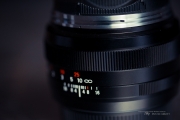

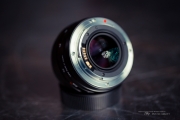

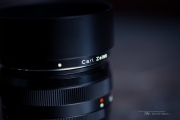
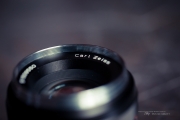

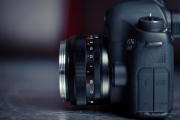

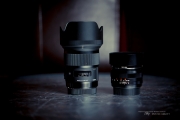
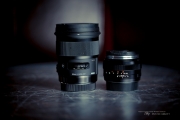

















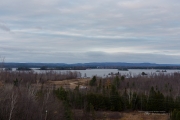








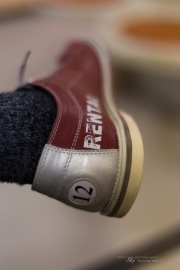

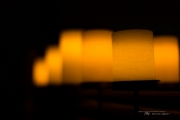





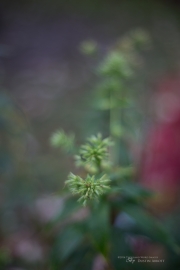





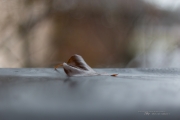



 Sirui Sniper 75mm F1.2 Review
Sirui Sniper 75mm F1.2 Review  Sirui Sniper 75mm F1.2 Gallery
Sirui Sniper 75mm F1.2 Gallery  Tamron 70-300mm F4.5-6.3 RXD Z-mount Review
Tamron 70-300mm F4.5-6.3 RXD Z-mount Review  Nikkor Z 40mm F2 Review
Nikkor Z 40mm F2 Review 






Dustin,
I've used the lens extensively and can chime in with a few thoughts about the Zeiss 50 Planar.
1. Since it doesn't any floating elements, close up performance is not very good at all. Using it up close and wide open is a recipe for poor photos.
2. Given that test sites such as the digital picture or Photozone take photos of their charts at close range, it doesn't perform all that well in the tests.
2. It is quite good at middle distances to infinity. Real world shots stopped down are fantastic with great sharpness and bite.
3. Shots wide open or near it, at any focal range, can be hit or miss. Portraits at f/1.4 or f/2 can have their place. I've taken other environmental type of shots at these apertures and have liked many of them for "the look", but there is a veiling haze.
It's certainly a lens that has its limitations, but if used for its strong suit it has a character all its own and holds up well to the competition. I wouldn't be surprised at all if the 50 Planar beats the new Sigma 50 Art at infinity stopped down some.
I ultimately sold mine due to the limitations, but miss it now.
Dave
Dave, thanks for the great feedback from someone who has spent more time with the lens. I feel like I can agree with your statements at least in the sense that I was quite impressed with the sharpness of pictures at infinity focus. Those also happened to be stopped down a bit, but still. I doubt, however, that the Zeiss beats the Sigma in sharpness even at that point, although I do prefer the drawing and bokeh from the Zeiss…along with the color rendering.
Thanks for adding your feedback!
Dustin
Thank you very much for this review, Dustin, as well as for the YouTube video, great descriptions about all important aspects. I really liked the fact that you included some comparison with other lenses, including the "oldies".
I need guidance deciding what lens to get, that maybe you or someone here can help me with.
I'm about to purchase my first full frame and I have decided to go with Canon 6D.
Of course, there are packages/bundles/kits of the camera, plus some "blockbuster" lenses and other goodies, but I'm looking for something more specific.
My intention is to use the equipment to shoot an artistic installation with the following criteria:
1. The installation is wide, hence, I need to take the shot from about 4m (13ft).
2. I'm not going to use any Bokeh or any other optical compositions, because of the following topic.
3. My intention is to use light painting technique, hence, the exposure will be at bulb, ISO 100 and the aperture as small as possible.
4. Human bodies are involved in the composition, hence, I need no distortion on the edges of the frame. That's why I need a standard, prime 50mm.
Of course, I can get the "fantastic plastic" Canon 50mm 1.8, however, despite the fact I have a very strong case of the equipment I want to use to take this picture with, I would like to get something that I can use to explore other scenarios. That's why I'm looking at something wider than 1.8, like this 1.4 you are reviewing here.
My dilemma comes when people start talking about sharpness. Everyone of course will review the equipments at its widest aperture, but never at the smallest. Is this because it is obvious that the sharpness will be great at, say f/22 with any lens? Since it's light painting of human bodies I'm shooting, I really need to make sure things are as sharp as possible, because the composition, by nature, is already chaotic enough as not to have sharpness to it (especially that "dreamy quality" you are talking about, which is great for other scenarios I would love to explore).
Important questions:
1. When you say that the lens "does not have a lot of strong micro contrast" at the widest, would you say the same happens at the smallest aperture?
2. Do you think I need a different type of lens for my picture? If so, what would you recommend?
Thank you very much in advance, I greatly appreciate any help.
Cheers!
I’ve responded to this in a direct message, but suffice it to say that the lens becomes very sharp by about f/5.6 and has great contrast. Diffraction starts to limit sharpness somewhat after f/11, but that is true of just about every lens.
Nice review and I would agree with all your observations.
I had the lens a while back and decided to sell it because the difficulty of focussing with modern digital cameras. Bought Nikon's 50mm 1.4 offering and while focusing improved the rate of technically correct keepers it is nowhere near the colour rendition and cinematic look of the zeiss. So after living with the nikon for 2 years I am now selling the nikon lens and just got the zeiss.
I also find that the flaws make the lens stand out from the crowd. I find Sigmas boring in comparison. Also, while the 50mm makro planar from zeiss is a technically better lens I found it slightly mundane and overrated.
Nice review and I would agree with all your observations.
I had the lens a while back and decided to sell it because the difficulty of focussing with modern digital cameras. Bought Nikon's 50mm 1.4 offering and while focusing improved the rate of technically correct keepers it is nowhere near the colour rendition and cinematic look of the zeiss. So after living with the nikon for 2 years I am now selling the nikon lens and just got the zeiss.
I also find that the flaws make the lens stand out from the crowd. I find Sigmas boring in comparison. Also, while the 50mm makro planar from zeiss is a technically better lens I found it slightly mundane and overrated.
That sounds about right. Zeiss glass/coatings are special.